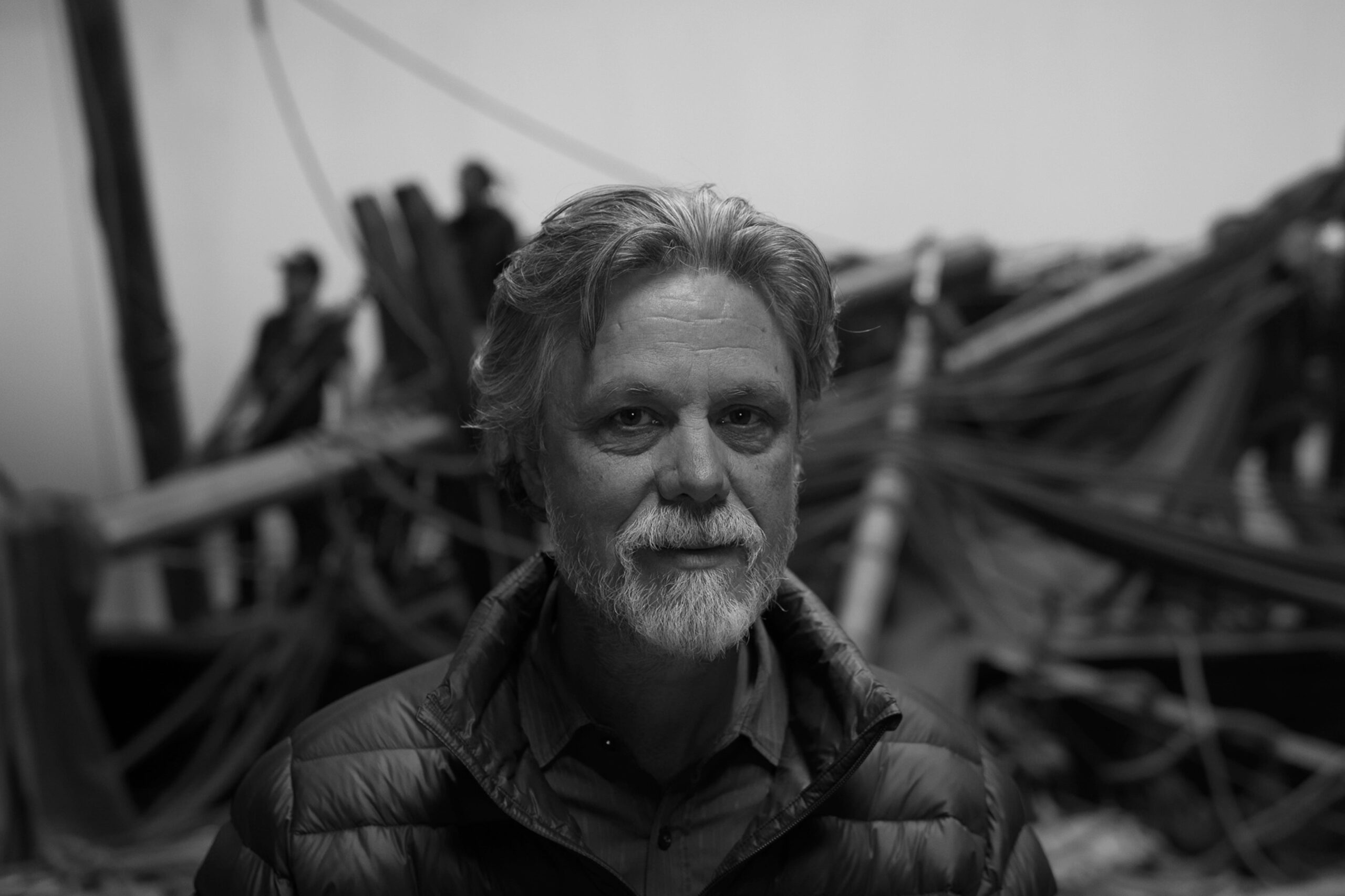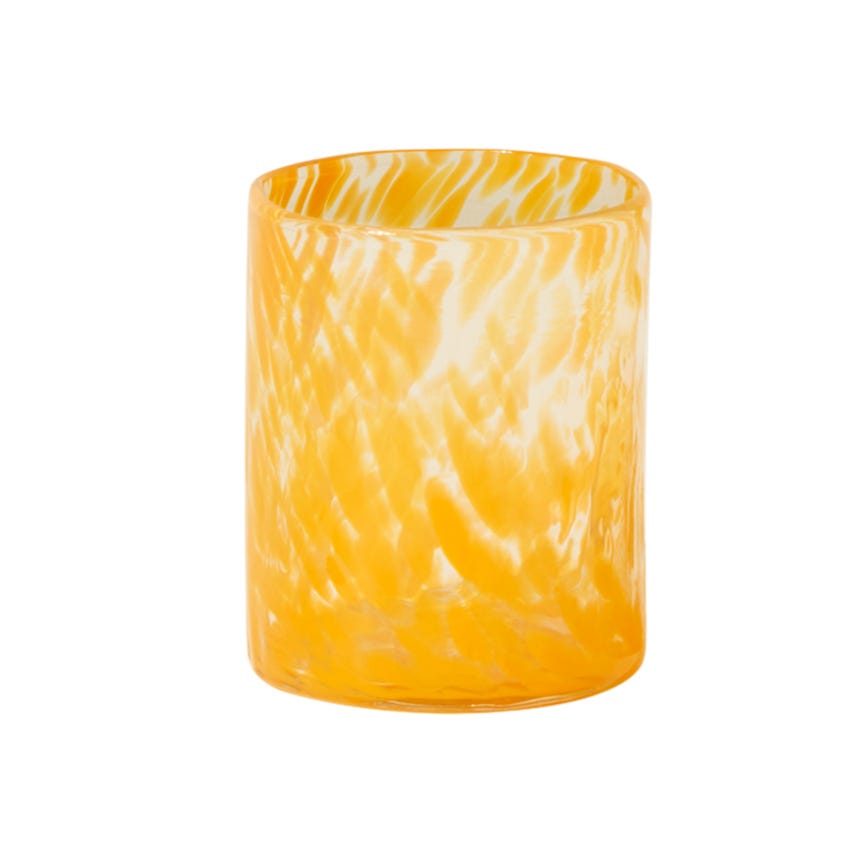In Robert Egger’s Nosferatu, decay has never looked so exquisite. While Bill Skarsgård’s Count Orlok may be getting all the thirsty social media attention, it’s the decrepit world that he inhabits—created by Oscar-nominated production designer Craig Lathrop—that is the object of our darkest desires. As part of Eggers’ trusted «family» of collaborators—having worked with him on The Witch (2015), The Lighthouse (2019), and more—Lathrop knows a thing or two about bringing historical nightmares to life. But Nosferatu presented a unique challenge: how do you make 1838 Germany feel both historically accurate and supernaturally unsettling?
The answer, it turns out, involves four dozen research books, seven truckloads of sand, and more rats than anyone should have to deal with. «The approach Rob likes to take, and I do too, is that he wants it to be as period accurate and authentic as possible,» Lathrop tells ELLE DECOR (in what might be the understatement of the century). This dedication to historical authenticity meant amassing a treasure trove of reference materials. “I bought four dozen books on different subjects,” he tells us, covering everything from Solominic magic and the occult to Gothic architecture. These details extended to every corner of the production’s massive scope, encompassing 60 distinct sets, most built entirely from scratch.
Like a vampire’s reflection, finding the right historical references proved elusive. Since photographs from 1838 weren’t available, Lanthrop turned to period artists for inspiration, particularly Romantics like Caspar David Friedrich, whose sweeping landscapes and solitary figures heavily influenced the film’s visual language. During this research, he also discovered a fascinating collection of Biedermeier interior watercolor paintings commissioned by wealthy homeowners of the period who wanted to document their newly decorated rooms, which proved invaluable for creating the film’s distinctly German aesthetic.
The film’s visual language navigates two distinct realms: the bustling Hanseatic town of Wisborg and Orlok’s decaying domain. The fictional Wisborg was erected from scratch at the Barrandov Studios in Prague, drawing inspiration from an amalgam of façades across Lúbeck, Stade, Weismar, and Hamburg in Germany, with touches of Poland’s Gdańsk. In Wisborg, Lanthrop plays with class distinctions through interior design—the Hutter couple’s modest home reflects their social aspirations through Biedermeier-style furnishings (a period choice that represented “a rejection of the aristocracy coming out of the Napoleonic Wars”). This includes interiors like a wall-mounted pocket watch holder: “That’s for people who can’t afford wall clocks,” he explains. “You would hang your pocket watch in that little hole when you were home.”
In Orlok’s castle, decay is an art form. Initially considering the Czech Republic’s Pernšejn Castle—the same location Werner Herzog used in his 1979 adaption of the film—Lanthrop found himself faced with a peculiar problem: everything was too pristine. Even Romania’s Corvin Castle, which ultimately provided the exterior shots, had undergone too thorough a renovation. “When I first started looking for the castle location, I looked at most of the castles in the Czech Republic and Romania,” he tells us. “There were two different favors—either they were complete ruins where the walls were falling down, or they were beautiful and quite spectacular on the inside, but whitewashed and spit-shined for tourists. And that just wasn’t Orlok.”
The solution? Build it all from scratch. “I don’t know if you can have a diseased building, but it certainly was a thought going through my head. It needs to feel like Orlok’s place. It should reflect Orlok.” The result is architectural menace, with every corridor twisting and vast, furniture-sparse rooms amplifying the sense of isolation. “You should feel when you’re in the hallways that you’re not quite sure where you are because they’re twisting around in ways that leave you disoriented,” Lanthrop says. “When Hutter walks in there at first, it’s just him and Orlok: there’s nowhere to go.” Even the Romanian inn where Hutter stays was designed to make him feel out of place, with ceilings deliberately lowered so that Hutter is forced to bow to pass beneath them.
The film’s haunting beach scene (a nod to 1929’s Nosferatu: A Symphony of Horror), which was originally planned for Germany’s Baltic coast but ultimately shot on a Czech lake, required creative attention, too. Those seven truckloads of sand? They transformed the lakeside into a convincing coastal setting, complete with memorial crosses for lost sailors. The attention to detail extends to every prop and set piece—Orlok’s sarcophagus design alone features Dacian dragons inspired by Trajan’s Column and meticulously researched occult symbols. “We tried to make it all mean something,” Lanthrop says, though he admits that many of these meanings probably went unnoticed, or were never seen in the first place—German bookkeeping records fill desk drawers that never even open on camera.
But one thing that did not go unnoticed? The film’s chapel sequences—featuring hundreds of thousands of rats. While several thousand real rats occupied the foreground, creating the illusion of 100,000 rodents required some movie magic. “I built these half-meter square ‘rat mats,’” Lanthrop tells us. “I took very realistic looking toy rats and made them look like they were crawling all over each other, then took a mold and made these flocked mats with rubber tails coming out.” These mats provided a base layer for visual effects to animate additional rats, creating the writhing sea of rodents that we couldn’t get out of our head. “Turns out rats are incontinent,” Lanthrop adds, “so when you get thousands of them together, they’re no longer that sweet little clean rat.”
It’s this kind of unflinching commitment to authenticity that is exactly why, come Oscar night, we might just see Lanthrop sink his teeth into a golden statue. “You want sets that characters will be reacting to,” he tells us. And react they do—along with the rest of us.

Julia Cancilla is the engagement editor (and resident witch) at ELLE Decor, where she manages the brand’s social media presence and covers trends, lifestyle, and culture in the design world. Julia built her background at Inked magazine, where she grew their social media audiences by two million, conducted interviews with A-list celebrities, and penned feature articles focusing on pop culture, art and lifestyle. Over her five years of digital media experience, Julia has written about numerous topics, from fashion to astrology.








